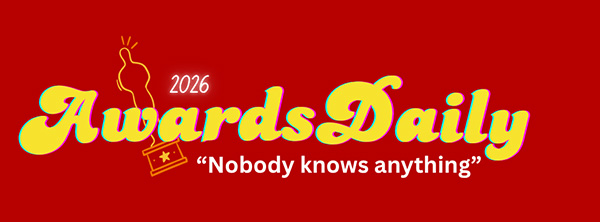Television Academy, please consider Jenner Furst’s Time: The Kalief Browder Story from Spike. Furst talks to Awards Daily TV about the story’s power.
Imagine being a 16-year-old boy imprisoned for allegedly stealing a backpack. After that, you’re taken to Riker’s Island, notoriously famous for being one of America’s most difficult prisons. The thought boggles the mind and terrifies almost anyone.
Kalief Browder was that teenager, legally not even allowed to buy alcohol, but he was imprisoned like an adult. He spent over 1,000 days in prison. He spent countless days in solitary confinement. Kalief Browder was beaten and abused by prison officers. Video footage captured the abuse. Eventually released, Browder took his own life.
Time: The Kalief Browder Story, a 6-part docu-series from Jenner Faust and Julia Nason, came to Spike with the full backing of Harvey Weinstein, Jay-Z, and Viacom. The series sheds light on Browder’s tragic story and how the judicial system failed him. It is every bit as compelling as educational.
Consider Time: The Kalief Browder Story as you read this interview with director Jenner Faust.
What was the “I need to shine a light on this” story moment for you?
Julia Nason and I read the newspapers. We watch everything that we can about nationally and what’s going on in our city. As you know from the work that I’ve done, I’ve been into this subject matter for over ten years.
I saw Kalief Browder’s story in the New Yorker and was very moved by it. I saw stories about it and continued to work on what I was doing. It took our partner Nick Sandow who is a star on Orange is The New Black, and for years we’ve been working together. Nick said, “I can’t look away.” Nick is from the Bronx about a mile away from where Kalief grew up. He was a wayward kid himself but from another side of the track. Nick is Italian, Kalief is black. These two different worlds, and he, of course, himself is scared of going to Rikers Island.
Kalief passes, and Nick reached out to the family through their attorney and said, “Whatever I can do.” Nick was talking to me and said he didn’t want the story to die. Julia and I said, “If this story is going to live on forever and if Kalief is going to live on forever, it needs to be an event that has historical significance that will allow it to be eternal for generations.” We didn’t just want it to be a news story or a headline but for him to become a historic figure that he deserved to be and that his life warranted for the sacrifices he made.
We began on the project. It took heart to hearts with the family and for us all to come together and for me to look in the eyes of his mother, Venida Browder, who became a dear friend of mine. We made this commitment together that we were going to honor the life of Kalief and his family and the struggle that they had endured. We wanted to show them that their lives mattered, and with perseverance, they would never die regardless of what happened.
That began the journey, and our company Cinemart worked for six months independently developing the project, shooting for six months, shooting intensely with the family. We went to his home where he had taken his own life, and the ghosts were still there.
Many things had not changed. The clothing was still there. His bed was still made from the day he died, and his mother was suspended in a period of grief. When we had reached a critical mass of material, our next step was to find a partner that would allow us to cut through all of the bullshit that happens when you pitch a TV show.
We knew Jay-Z was the ideal partner because he had already expressed commitment to Kalief’s life. He had sought him out. He had met him, and he had spent personal time with him. They met a month before Kalief killed himself, but that was the most important day of Kalief’s life. It was a very organic connection in which we followed up with Jay’s team who had been at the funeral.
It all moved quickly. Jay saw the work we were doing, and without hesitation said he was on board. Within two weeks we got a call from The Weinstein Company, and Harvey Weinstein said he was 100 percent in on the project and was ready to make sure the project gets the type of attention that it can only get with the partnership we were about to perform.
We knew we could trust that team from the amazing work they had done. Harvey is the kind of guy who when he says he’s all in, he’s all in. Things change. Things move and things happen.
For us, our focus was to keep doing the work. When Spike came to the table, we knew right at the outset that they were not going to treat this like another non-fiction project, just another docu-series. We knew they would make this the biggest thing they could do and that’s what ended up happening.
It was so humbling to watch because having made documentaries for years, having worked with celebrities and having seen these projects and their DNA, but never have I seen a network so as much commitment as this. Across the board, the Viacom team was behind it, and we were baffled that this project that had the deepest roots of injustice, tackling racism and going against the grain, had a huge corporation to get behind a message that is so complicated.
It’s a complicated thing that we are all complicit in. Yet this corporation and Jay-Z never flinched or turned away. Now we’re at this incredible place where the world has a chance to honor him to the next degree and help him enter into history. To be here on the day of his suicide anniversary is extremely surreal. This is an opportunity for the world to validate that his life did matter and that the life of his mother did matter.
I feel so humbled to be here today to be doing this in honor of Kalief and in honor of his mother Venida who was a dear friend of mine.
How did you earn their trust? The ghosts were still there.
The way that we always approach projects has never been about maneuvering, it’s always been about integrity. You can’t fake this trust, it is earned.
You have to sit there without cameras and have honest conversations about their fears and their hopes and their pain. We had developed a deep lasting connection and a commitment that as hard as it was going to be. Together, we were going to do this for Kalief. We weren’t going to look away.
For many filmmakers, I wish I had a sense of boundaries, but I don’t. I became a member of their family, and I was there for them at times when no one else was.
When the news cameras stopped rolling, they were sitting alone in their house. Julia and I were there. Julia is also my wife, and we were there for them so much so that we became a part of the Browder family. We continue to be a part of the Browder family today.
That’s a part of the commitment of the project. The most painful thing I’ve ever had to endure as a filmmaker was when I was in the room with Venida when she died. I knew at that moment that I had witnessed two murders.
I had seen the murder defacto of Kalief Browder, and I had seen the murder of a woman that I love, Venida Browder who died of a broken heart.
It was shocking to see how Kalief had been under surveillance his whole life.
Yup, his entire life.
I found that completely shocking. What for you, was shocking to learn?
Learning the intricacies of the foster care system and how we do surveil children. It’s intrinsically a racist system because it affects people of color. It’s an economic system. For the people who don’t have the ability to defend themselves against a faulty drug addiction charge or child abuse charge, you have to keep in mind in America we’ve been penalizing people for years.
Kalief’s mother is an addict, and she is suffering from a disease. She is penalized as a criminal.
Remember in Episode 1 where we take you back to Riker’s Island, and the women are saying goodbye to their children?
Yes.
That’s what Kalief Browder’s was life. Whether he remembers it or not and that he would end up there sixteen years later, there is no mistake behind that.
It’s a system that works like a charm. It’s a very tragic thing to put all the pieces together and then have a moment of clarity where you realize everything is working mechanically as it was built to work. The product is basically to form a new form of slavery. There are economic connections that are clear to see.
It was our intention to show a tragedy that not many people had digested. Everyone knows prisons are bad and that we have mass incarceration. People don’t realize that at the moment of arrest the violations of Constitution and Human Rights that happen on a daily basis to people of color and to people who are poor.
That’s one thing that resonated across because it is not just people of color, it is people of poverty.
When we went to other places in the country and described the project to others, people would say, “My cousin is in the system, and he’s been waiting for a trial for years and we can’t afford bail.” Then we learn they’ve been recriminalized because they got into a fight in jail. All of this are things that Americans experience.
You don’t have to be in the Bronx. You don’t have to be in New York. If you look at what Kalief Browder was born into and the trajectory that led him to Riker’s Island, it was already written.
That realization brought pain to my heart.
It’s doing what it’s meant to do.
It’s putting away poor folks and people who are disenfranchised. This is a form of human chattel where people are getting ensnared in a system that turns them into a commodity. The numbers have human consequence. It was our company goal to shine a light on this as a human rights issue. One that has previously been looked at as a statistic.
People don’t learn from statistics. They learn from human stories. I think that’s what our goal was.
We hear a lot of statistics.
All I can think of are the eyes and the tears of the families that I’ve come across in the ten years that I’ve been on the field, to the mothers who I’ve hugged, to tears running down their face. That is what the statistics mean to me.
It’s one thing to witness it, but it’s a far more profound experience to live it. To the people living it in America know it like it’s their life. On one hand, I’m humbled we’re here in this moment and we are honoring it. The reality is we need to double down our efforts because there are people who want to roll things so far back, it’s a tragedy.
It’s a double tragedy that we could have this in front of American people and there are policies in place that want to double down on the chaos and the carnage that is literally taking human life left and right.
I read the Mayor of New York is going to close Riker’s. How do you feel?
We were interfacing with the mayor. We went on a dog and pony tour of the reforms they were doing.
When the series was on the air, and the fifth episode had aired. We had a commitment with Spike that we were going to do this as live as possible. That announcement to close Riker’s Island happened on the eve of our sixth episode airing, so we were able to include that in the epilogue so people could see how much his life had resonated.
In the span of the show itself, live events were happening that affected the show. Who knows how long it’s going to take to happen, but it would be a farce to think that it didn’t have to do with Kalief Browder.
You explore what prison does to the human mindset.
That was part of the scientific look that we wanted to take into the human brain and the development of the adolescent brain. The fact that Kalief was still a child and endured 30-50 times the amount of consecutive solitary confinement the United Nations views as torture, and before he had ever been convicted of a crime, and this wasn’t just happening to Kalief, this was happening to thousands of kids there. When you connect the dots, every day of this project was another staggering and nauseating murderous fact.
We are at a point now where it has raised a lot of eyebrows. It’s two years since his death and discussing the memorialization of his life and his mother’s life is really humbling. His life mattered and so did his mother’s. More importantly, there are millions of Americans whose lives matter right now, and we have to honor them and show our hearts and intentions to changing the system.
What drew you to the idea of making it a docu-series?
Films are very valuable, but for the most part when you have a story that is vast and you have complexities, putting it in a feature would have stunted what we were trying to accomplish. Julia and I used to say in the editing process that it should be a 20-part series. We interviewed over 500 people and had so much footage so it wasn’t right to just do a film.
Harvey and Jay brought something valuable to the table and said when you’re able to put a series together, you’re able to sustain national attention week after week. You have people continuing the dialogue about why this is important.
We worked with Spike to create a curriculum, almost like a roll out where each episode would have a new partnership and a different subject matter. As you see in the series, we tackle a different thing every episode. It was something we designed over the Cinemart.
It was something that Jay, Harvey, Viacom took and ran with. They were able to take the systemic problems episode to episode and build partnerships that would create a conversation that would stick.
That’s what happened, and you can’t do it with a feature. You have the festival premiere, the broadcast, and then you had the awards campaign. With this, we had it times six. We continue to have that. That is really the changer that keeps the conversation fresh and keeps it going.
Netflix will totally be a part of that conversation when it airs.
I’m very excited for that. I was so humbled by the viewership for the show on Spike. I think we had 30 million people. We had an average of 4 million per broadcast and then we had an additional 20 million streams on the site. To reach 30 million people for an initial launch is remarkable.
Was it given time in the news? I wasn’t living here in the USA when Kalief died.
What happens in the cycle is that everybody needs that hot headline. That hot headline creates a lot of attention. Kalief got reduced into a prop to propagate the message that was being covered in the news about our broken system and the corruption of Riker’s Island. The reality is that his human existence was falling so short of the tragedy that it took our series to expose what his life was like in the city.
A lot of people said that they forgot the fact that he was alive, living in the city, living in pain while his news story went on the airwaves. Even the New Yorker article was able to do so much. If you look at the momentous change that has occurred because of the series that is really what has really made the difference and humanized him.
His life is now immortal. That took the partnership that was committed and the viewers who were committed.
What should viewers take from this?
I think viewers need to take the humanistic approach to the story and forget the statistics when they walk past a person. That person might have experienced this, or their families have experienced it.
We need to end this mass incarceration of slavery for a humanistic approach with our hearts open and our minds ready to tackle the issue.














